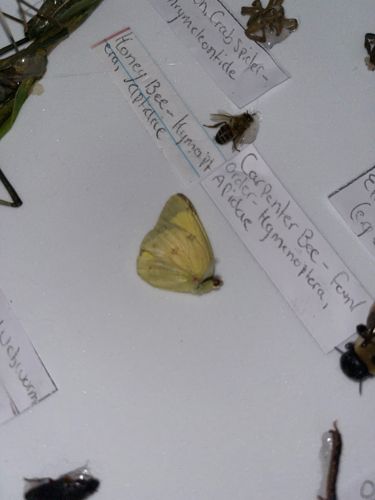Honey Bee
Scientific Name: Apis mellifera
Order & Family: Order: Hymenoptera, Family: Apidae
Size: Workers are typically 10-15 mm long. Queens are larger, up to 20 mm, and drones are robust, around 15-17 mm.

Natural Habitat
Found in diverse habitats worldwide, often near flowering plants, forests, meadows, and agricultural areas. They live in colonies in hives, which can be natural (tree cavities) or man-made.
Diet & Feeding
Honey bees primarily feed on nectar, which provides carbohydrates (energy), and pollen, which provides protein, fats, vitamins, and minerals. They also produce honey for food storage within the colony.
Behavior Patterns
Honey bees are highly social insects living in large colonies. They are known for their intricate communication, including the 'waggle dance' to indicate food sources, and their roles within the colony (queen, workers, drones). Workers are responsible for foraging, nursing young, hive construction and maintenance, and defense. They are important pollinators.
Risks & Benefits
Benefits: Honey bees are crucial pollinators for a vast number of crops and wild plants, contributing significantly to food production and ecosystem health. They also produce honey, beeswax, propolis, and royal jelly, which have economic and medicinal value. Risks: Stings can be painful and cause allergic reactions in sensitive individuals (anaphylaxis). While generally not aggressive, they will sting to defend their hive.
Identified on: 9/23/2025